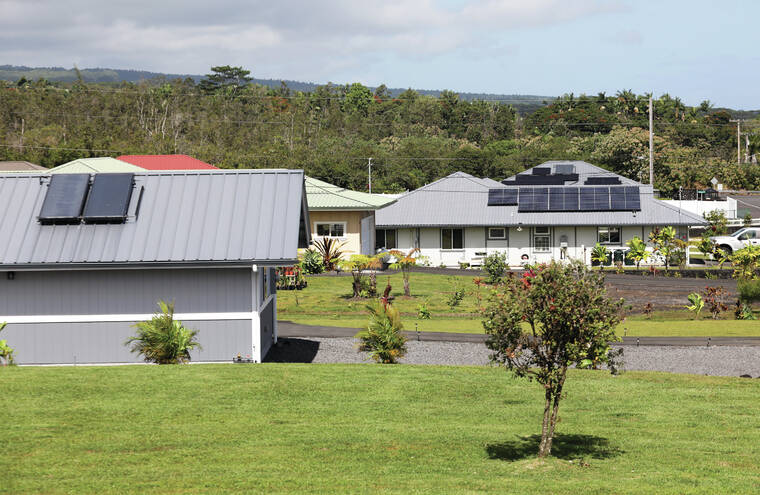As energy costs ballooned last year, more and more people on the Big Island switched to solar power.
According to Hawaii County data, 1,536 permits for rooftop photovoltaic systems were issued in 2022, more than double the amount issued in 2021. That number made last year the most successful year for new solar installations since 2016.
In 2015, the state Public Utilities Commission ended its net energy metering program, a popular solar incentive program that credited users the full retail rate for extra solar energy that was exported to the power grid. When that program ended, solar adoption dropped precipitously statewide, said Marco Mangelsdorf, managing employee for ProVision Solar in Hilo.
But since then, permit numbers have gradually increased year-by-year, until last year’s big jump. Mangelsdorf guessed that the primary impetus for the increase was the sharp increase in energy prices last year, with Hawaiian Electric rates rising as high as 50 cents per kilowatt-hour.
“There was a lot of pain that Hawaiian Electric customers — of which there’s about 85,000 on the Big Island — felt when they had to write that check,” Mangelsdorf said. “People have started asking, ‘Is there an alternative to spending $400, $500 a month on electricity?’”
Even with the death of net energy metering, solar users can still receive some credit from Hawaiian Electric for exporting excess power to the grid.
On the Big Island, that credit equates to 10.5 cents per kilowatt hour.
Between Hawaiian Electric’s credit programs and tax credits offered by the state and federal governments — Hawaii offers a tax credit that covers up to 35% of a solar system’s installation, while the U.S. Department of Energy’s credit covers up to 30% — Mangelsdorf said some household solar installations could pay for themselves within five years.
With an estimated 25,000 households on the Big Island, Mangelsdorf said he believes the solar industry still has a lot of room to grow. Hawaiian Electric reported that as of 2022, a cumulative 15,358 solar systems have been installed in Hawaii County.
Meanwhile, the state Legislature is seeking to stimulate the industry’s growth even further with a pair of bills that would require all single-family residential developments with 10 or more units to include a rooftop solar system.
Those bills note that the state’s goal of reaching 100% clean energy by 2045 is looking increasingly hard to reach using just large utility-scale projects, and that smaller systems will help close that gap.
“California adopted a similar requirement for solar on all new low-rise residential buildings in 2019, with extensive studies showing that savings on average were double to the investment made,” according to one of the Hawaii measures, House Bill 327. “The California mandate was extended in 2022 to include all commercial buildings, including high-rise residential buildings, which studies also found to be cost-effective.”
HB 327 has passed its committee hearings and a second reading in the House.
Email Michael Brestovansky at mbrestovansky@hawaiitribune-herald.com.

